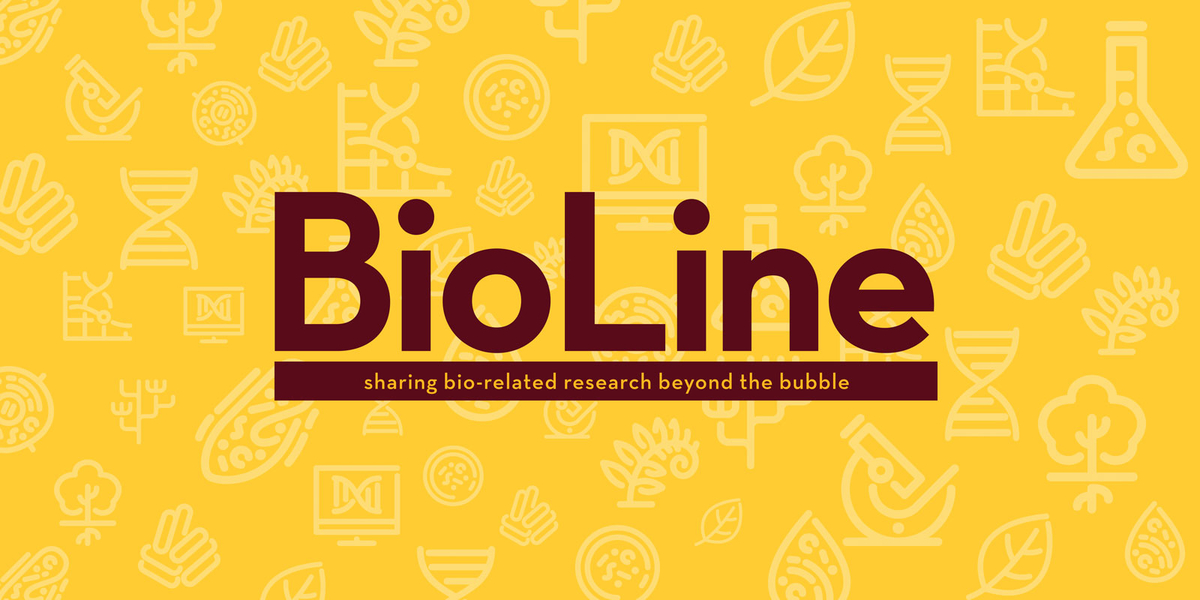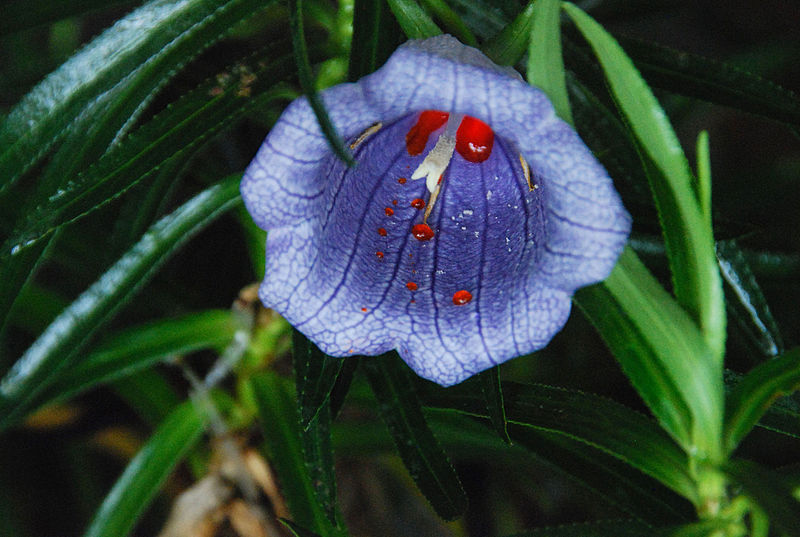
Hidden within the leaves, beady eyes remain locked on their next meal. The oozing, blood-red liquid is irresistible. But this isn’t a vampire hunting down their next victim. It’s a gecko slurping up completely vegan flower nectar.
While many plants produce colorless nectar to attract familiar pollinators such as bees and butterflies, a cup-shaped purple flower from a small island east of Madagascar, Nesocodon mauritianus, evolved blood-red nectar to attract a more peculiar partner.
Researchers at the University of Minnesota recently discovered that the scarlet nectar attracts day geckos, little green lizards that are the potential pollinator for this unusual flower.
But how does the flower create such stunning red nectar? The scientists found that the nectar doesn’t start out blood-colored, but transitions from yellow to orange to red like the setting sun. They discovered a certain compound, which they dubbed “nesocodin,” is responsible. This compound turns red once the nectar becomes less acidic, which happens naturally just one day after the flower blooms!
Once red, the flowers are ready to attract pollinators. Based on past observations, the researchers predicted that day geckos pollinate Nesocodon flowers. But if these geckos really are the true pollinators, why red nectar?
The team found that not only can day geckos see red nectar, but it stands out strikingly against the flower’s purple petals. Like a McDonald’s sign lining a desolate highway, the red nectar proclaims, “Eat here!”
And like people to McDonald’s, the researchers found that day geckos are attracted to this colorful treat. When offered both colorless and red nectar, the geckos visited and drank more of the red nectar.
This system using red nectar may not be as unique as it first appears. Another distantly related flower from the Andes, Jaltomata herrerae, also uses red nectar colored by nesocodin to attract its hummingbird pollinators. The scientists suspect that flowers may develop this colorful strategy to attract vertebrate pollinators, such as geckos and hummingbirds, when insect pollinators are scarce.
In addition to coloring red nectar, nesocodin could be used to create red dyes. Current natural red dyes are difficult to find and aren’t suitable for certain products. Nesocodin, on the other hand, could work in situations where other dyes fail.
While this research gives us a glimpse into a strange world of flowers seeming to drip blood, these colorful nectars remain mysterious. With about 70 flowers known to produce colored nectar—and perhaps more to be discovered—there is a rainbow of oddities to explore and understand. And by understanding more about this unique sliver of nature, we will understand not only how to create new dyes but more about the complexity and wonder of the natural world. —Ashley Darst

Citation: Roy, R., Moreno, N., Brockman, S. A., Kostanecki, A., Zambre, A., Holl, C., Solhaug, E. M., Minami, A., Snell-Rood, E. C., Hampton, M., Bee, M. A., Chiari, Y., Hegeman, A. D., & Carter, C. J. (2022). Convergent evolution of a blood-red nectar pigment in vertebrate-pollinated flowers. Proceedings of the National Academy of Sciences, 119(5), e2114420119. doi.org/10.1073/pnas.2114420119
Photo credit: Ph. Saget - Flickr, CC BY 2.0,